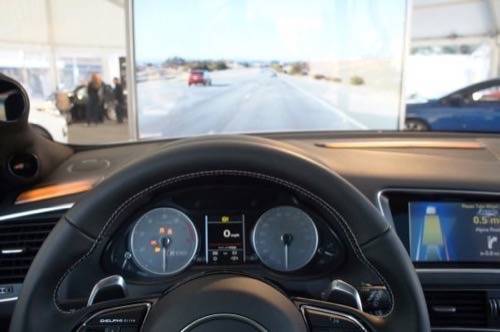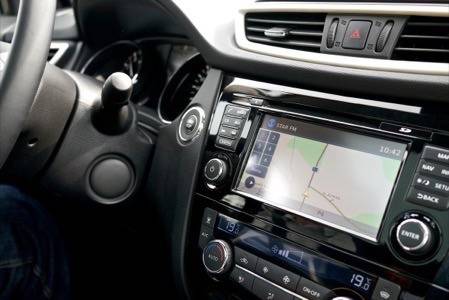Guest author Vitaly Ponomarev is the founder and CEO of connected-car developer WayRay.
Henry Ford would be astounded at what’s happened to the automotive industry he pioneered. No longer only a means of transportation, cars have entered an age where they’re thought of and purchased like a tech device. This shift comes with other major changes—from the way vehicles are made to the way they’re driven.
See also: The Developer Opportunity For Connected Cars In The Here Maps Acquisition
Since the Internet of Things (IoT) has been let loose, automakers are rapidly making models and making deals, so they can have the hottest car tech in the market. Whether it’s competing with the Tesla or acquiring in-vehicle mapping navigation, cars are rapidly resembling smartphones on wheels.
From within a moving vehicle, we listen to music, make phone calls, access real-time traffic information, among other activities. That’s not necessarily new, but advances in computer technology and networking capabilities are working at a dizzying pace to transform the automobile industry.
These developments will make for overall improvements to the experience of driving—with more convenient cars and decreases in fatalities from auto accidents.
Car Tech Accelerates

According to the Insurance Institute for Highway Safety, improved vehicle designs and safety technology have much to do with the continuing decline in fatality risk. The study reports that, in 2012 alone, there were 7,700 fewer driver deaths than there would have been, had vehicles remained the same since 1985.
Over the past three years, even bigger, broader and more sweeping changes have hit the automotive industry. But that’s nothing compared to the rapid growth still ahead for the connected-car market.
A report from wireless industry organization GSMA predicts that cars loaded with connected technology will create a massive market for related products. This new ecosystem of devices, accessories and other items is expected to reach $53 billion by 2018.
We’ve already begun to see the emergence of cars that were mere ideas a few years ago—whether electric, smart or self-driving.
One shift that may come before long: Your next car might not be from Detroit or Japan, but rather a local startup with an industrial 3D printer. This year, a small Phoenix-based company called Local Motors actually 3D-printed a car live at the North American International Auto Show in Detroit. The seats and the steering wheel were separately acquired and installed, but in time, those parts will be 3D printed as well.
Storedot, an eco-minded company based in Tel Aviv, has created an electric car that can charge a car in just five minutes to travel for more than 200 miles. It has already gotten a lot of attention for its fast-charging smartphone battery currently under development. For those daunted by the prospect of a full day or night of charging, this could be a game-changer.
Who’s In The Driver’s Seat?

Cars are also much smarter and intuitive these days. For the last few years, we’ve put a range of electronic conveniences in the car, and made them accessible at the push of a button.
Like your phone or tablet, hardware buttons are rapidly being replaced with touch screens. Carmakers are also working on driver interactions using voice control, hand gestures and eye movements.
Toyota’s recent partnership with Telenav for in-car mapping systems and German automakers’ recent purchase of Nokia’s Here for $3 billion illustrate the demand—and the willingness to fund—the next phase of automobile technology.
Eventually, that will extend to project similar to Google’s self-driving car and Audi’s “Jack” autonomous vehicle (which uses GPS and an onboard computer to automatically change lanes). But we’re not there yet. It will be quite a while before the road is entirely paved them.
So for now, humans are still driving, and new types of navigation technology are emerging to serve them.
Connecting To The Future
The IoT movement on the road will also usher in more V2V (vehicle-to-vehicle) connectivity, which is one of the biggest tech breakthroughs in recent times.
Automobiles, using designated wireless networks for short-range communications, will allow cars to broadcast their position, speed and other data to nearby vehicles. Connected cars will be more aware of road hazards in real time, better able to avoid collisions, minimize traffic congestion and offer better fuel efficiency.
AT&T and Audi are collaborating on a 2016 model equipped with Audi Connect, the carmaker’s version of integrated navigation, Internet database and internal Wi-Fi system. The vehicle will connect through the cellular carrier’s 3G or 4G LTE network.
The way drivers access information will change as well. Say goodbye to traditional dashboard instrument clusters, and get ready for AR (Augmented Reality) navigation. Some companies are pursuing projects like dashboard apps or heads-up displays.
With connected cars, the focus will be on the driver. In-car systems will collect valuable insights and provide personalized information based on driving habits and vehicle performance—with important data like mileage, fuel economy and favorite routes conveyed in new ways.
One of the most exciting will use holographic technology. My own company has been pursuing holographic projections in our development of a system called Navion, which puts critical information right on the windshield.
The future is hard to predict, but, based on present trends, it’s inevitable that cars are going to radically change over the next decade. We’ll sacrifice some of the thrill of the road, but what we will gain in safety, comfort and efficiency will forever alter how we define the driving experience.
Update: An earlier version of this article stated that Toyota had acquired Telenav. It had not; Telenav is supplying Toyota with in-car navigation services. The story has been corrected.
Lead photo courtesy of WayRay; Audi simulated self-driving car photo by Miriam Joire for ReadWrite; infotainment system photo by Kārlis Dambrāns










